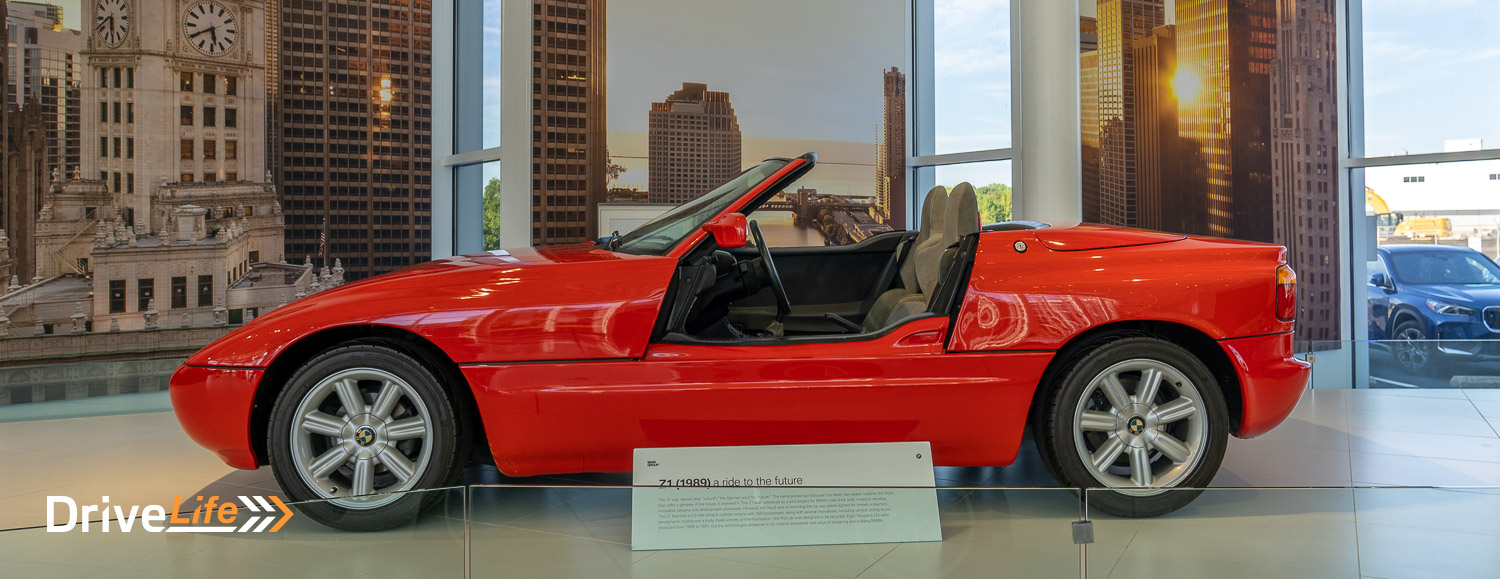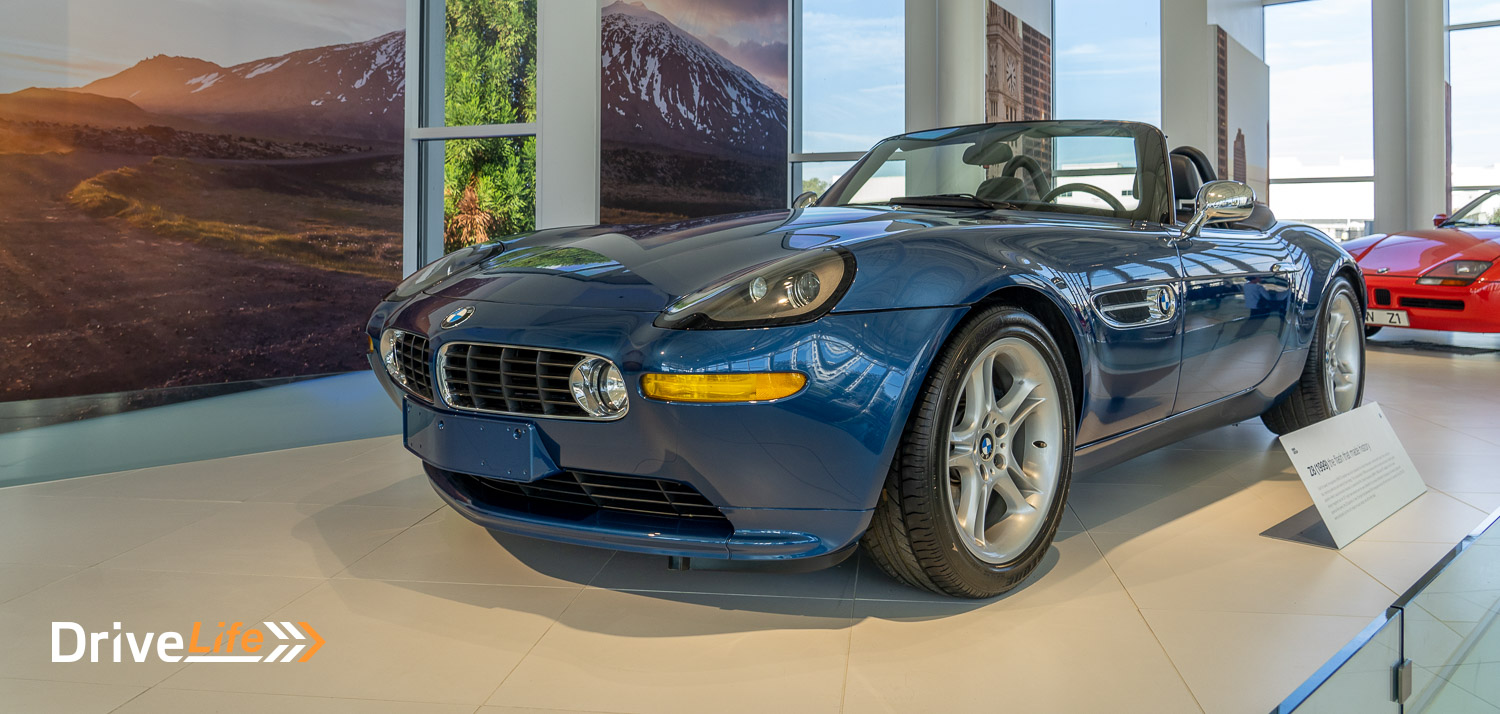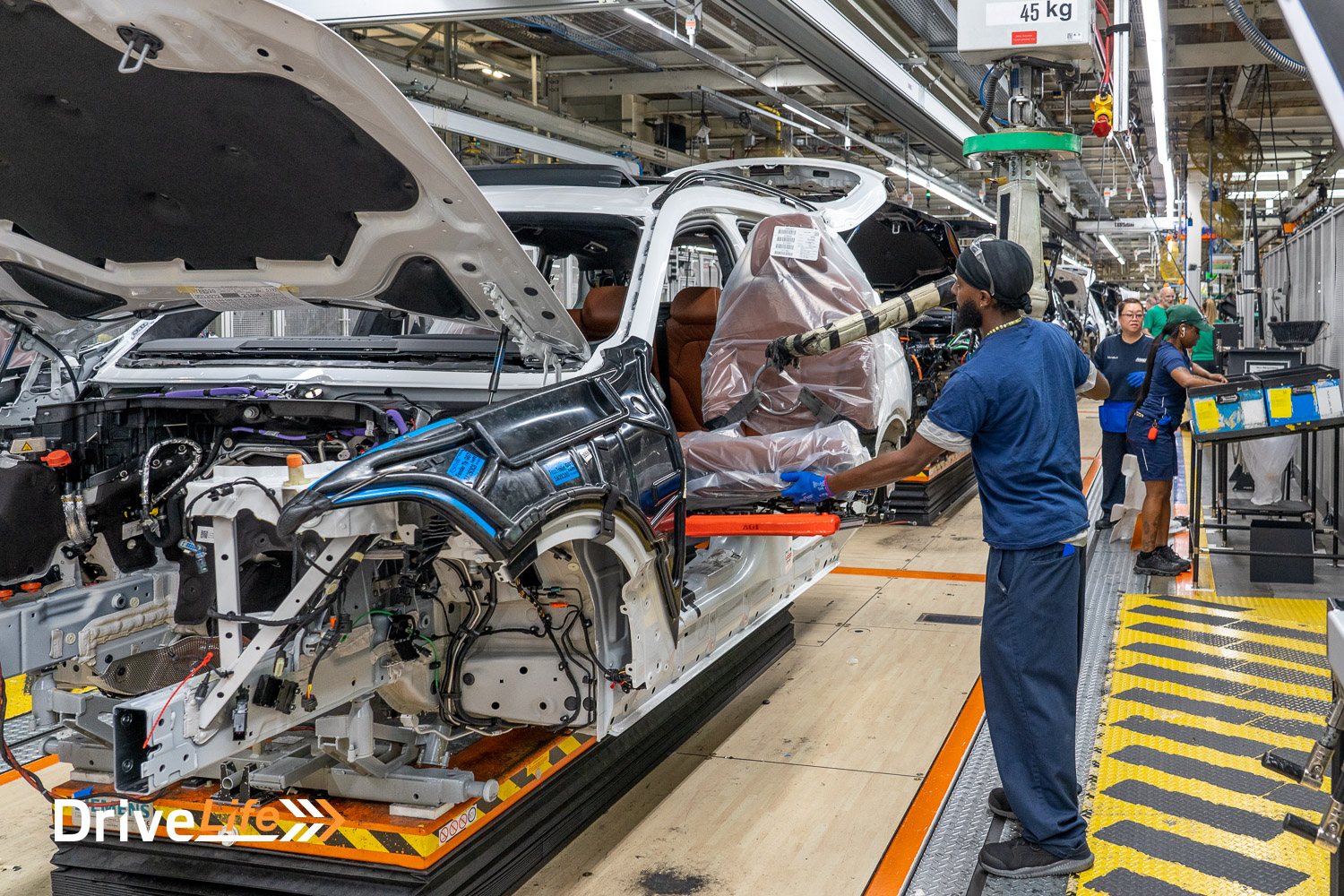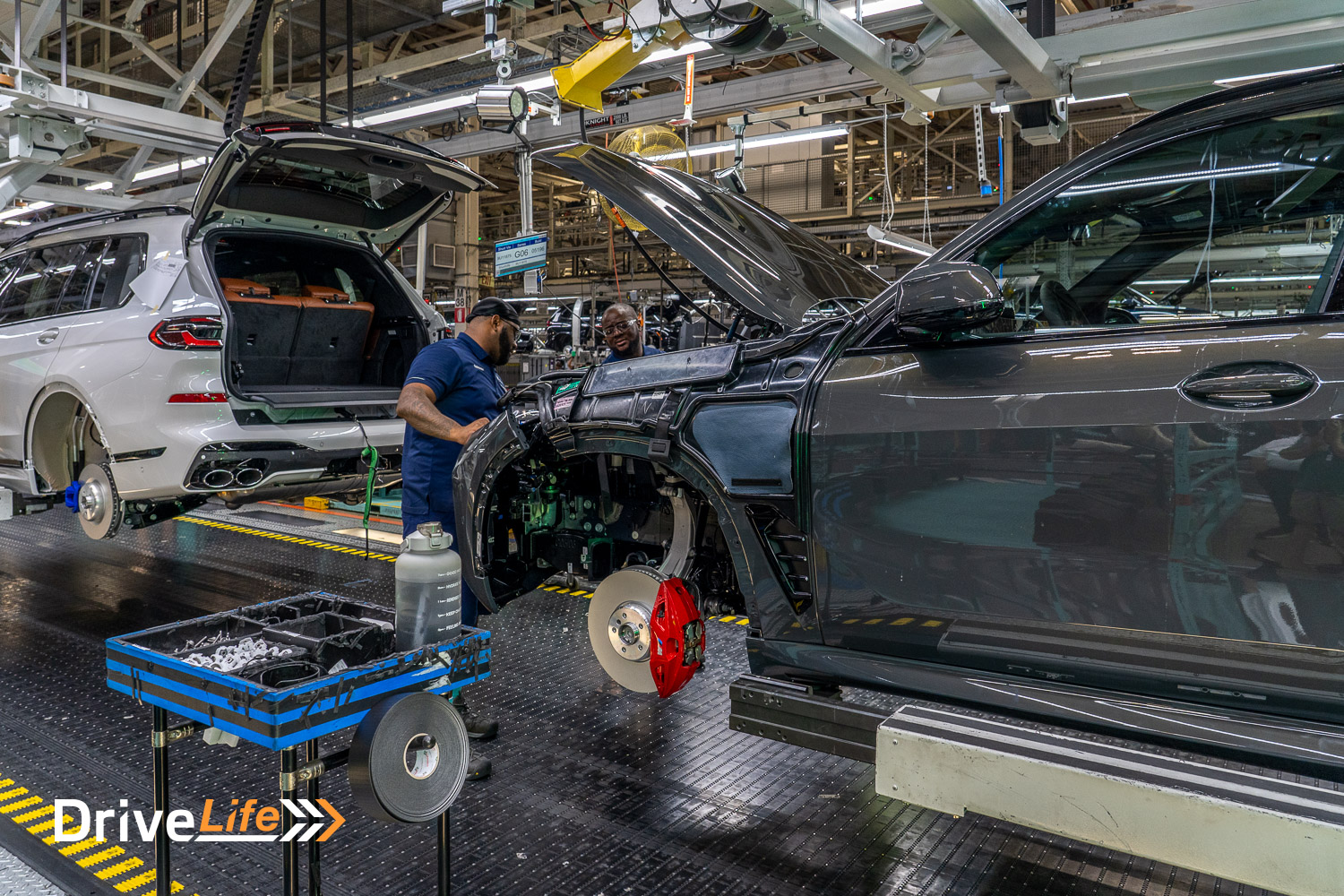As part of our 2023 USA Road Trip, BMW invited DriveLife to take a day off travelling and look inside their plant at Spartanburg, South Carolina.
Just pulling up to the visitor’s parking area is a sight; car park after huge car park for the plant workers – and there are other staff car parks as well as the ones I saw. The plant is built on a 1,100-acre block of land, just to give you an idea of its size.

In fact, it’s already outgrown that site, and there are two more logistics centres on land bordering the plant, but on the other side of the interstate. That meant BMW had to build two private bridges over the interstate so they could have easy access to parts to build cars. It’s this sort of scale and commitment that is mind-blowing.

I met up with Steve Wilson, the plant’s Media Communications Specialist, for my tour. Steve has worked at the plant for 24 years, and certainly knows enough about the production process to give me a good grasp on how they build cars here, and rarely did he not know the answer to a question.
The plant at Spartanburg builds BMW’s X3, X4, X5, X6, X7 and XM models. They have built other models in the past, but currently, they produce more BMW X SUVs than any other BMW plant in the world. The Spartanburg plant was built in 1994, and some of the original staff still work at the plant, as part of its incredible workforce of 11,000 people. I had assumed it was the area’s biggest employer, but Steve tells me that Michelin is nearby and has more staff, and the local education department also has more teachers on its payroll. Regardless, a workforce of eleven thousand is massive. Considering that 98% of the SUV’s manufacturing is automated, having 11,000 staff goes to show you where the cost is in building a new car.

The staff work on a 4-day, ten-hour roster, and every two weeks each staff member working on a roster has 5 straight days off. In American terms, that’s extremely generous.
Of course, it’s not all manual labour. The Spartanburg BMW plant has 2,500 robots to assist with building cars, and they are amazing to watch going about their tasks. Robotics are not cheap and along with 2,500 of them, BMW has invested US$12.4 billion in the plant to the end of December 2022. Why invest so much in a plant in South Carolina? Steve says it’s a mixture of factors, including:
- Statewide technical education system
- Skilled workforce
- Close proximity to rail, airport, interstate
- Deep-water port of Charleston
- Pro-business attitude of the state of South Carolina
Steve gave me a tour of the plant that builds the X5, X6, X7 and XM models. This plant alone is 8-million square feet in size, and it’s actually the original factory that’s been added to many times, so the sequence of building a car from start to finish isn’t an easy one to follow. Conveyor belts and racks holding cars ready for the next part of their lives make it all work seamlessly.

BMW Spartanburg – Just In Time, and Just in Sequence
The plant works on a Just In Time (JIT), and Just In Sequence (JIS) method. That means not only are parts – such as seats – delivered to the factory mere hours before they are needed, but they are loaded on a truck in such a way that when they are unloaded, the sequence in which they are taken off is exactly how they are needed to build a specific car, in the next few hours. It’s incredible to watch, and I saw example after example of this happening.

JIT and JIS can’t work for things like engines that come from other countries, but much of the BMW X SUV model’s parts are made locally in South Carolina. Steve mentions that by volume, Spartanburg is the biggest BMW plant in the world, as it rolls out 1,500 cars per day. In fact, 60% of BMW USA sales are cars that are built at this plant.
Thinking about logistics, that’s a lot of trucks needed to move 1,500 cars a day, but BMW has that sorted. At the back of the factory are 8 sets of train tracks, where the majority of the cars go to be loaded on and delivered around the USA or shipped off around the world. Both LHD and RHD BMW SUVs are built at the plant, and these are sent to over 120 world markets. In fact, BMW is the largest automotive exporter (by value) in the USA, with a total of US$9.6 billion in 2022. BMW says it has led this category for the last nine years in a row.

At 1,500 cars a day, you might imagine that’s quite a few built in the plant’s near-on 30 years history. To date, it has produced 6.3 million BMWs.
There are more logistics to consider; 11,000 staff eat a lot of food, but the café can cater for 800-1,000 people at a time. In saying that, Steve clarifies that most staff take their breaks in their own areas. By the time they actually walked across the huge plant to the café, had lunch and then walked back, they simply wouldn’t have enough time.
We started the actual tour watching something that was very special to me, but perhaps only me; one of the workers was applying the VIN to a BMW SUV. This is the beginning of the car’s identity for life – having its VIN plate stuck onto the chassis of the car.

Further along, a guy is installing the dashboard. I know it probably takes hours to remove a dashboard from a modern BMW SUV, but installing it looked too easy. A mechanical arm picks the right dashboard up for the specific car, and then a worker guides it into the car, into place. Then the robotics do the rest, lining it up perfectly and installing some screws to hold it there. The other screws required will be done manually, as well as doing other fiddly tasks like plugging in wiring harnesses.

BMW Spartanburg – Hydrogen Powered Tuggers & Forklifts
While we are walking about the plant, there is an almost constant stream of ‘tuggers’; small vehicles pulling trailers loaded with parts, or empty trailers going off to be filled with parts. I had thought maybe they were LPG-powered, but they are all powered by hydrogen. There are dozens of hydrogen refilling stations dotted around the whole site, and it takes less than four minutes to refill a tugger or a hydrogen-powered forklift. There are more than 800 of these tuggers (and forklifts) roaming about the plant, and they play a vital role in the plant’s efficiency.
Methane gas supplies 20% of the plant’s entire power needs. Where does that methane come from? There’s a landfill 8.5 miles from the site, so BMW ran a pipe all that distance. Using methane means a reduction in CO2 emissions of 9,200 tons per year.

Moving along, it was cool to see centre consoles being built and then installed. BMW make the best consoles out there, so watching them in an almost raw state before being put into a car was special. The consoles arrive semi-finished; the leather for example is already in place, but plant workers will install the required electronics that are needed for the specific car being built. It’s a well-oiled machine.
That conveyor-belt system doesn’t allow for a lot of time. While workers generally have just one task to do, they get only 70 seconds to complete that task before they have to move on to the next car.
BMW Spartanburg – PHEV and EV
We come to a part of the factory where plug-in hybrid BMW SUVS (PHEV) are having their battery packs installed. Steve says around 16% of production is currently PHEV models. They have their own battery assembly plant onsite where the battery packs are put together. That battery assembly plant is 70,000 square feet alone, but it’s simply not enough; plans are in place to build a new 1 million-square-foot battery plant (for EVs only) in the neighbouring town of Woodruff. That battery assembly plant alone will cover 350 acres of land.

Moving along the conveyor belts, we eventually get to the end of the line where cars have their engines started for the first time. Before this, all fluids are put into the car, such as power steering, coolant, and petrol (or diesel). The cars have their bonnet badge installed, and then move on to the next stage of checking for quality. Some of the electronics in each car have already been tested before this, but this stage is about taking the car on a rolling road up to 160km/h, and then each car is driven on an internal, twisty track that includes bumps and ridges to identify any possible squeaks or creaks in the car.


While DriveLife received a special tour, going to places others can’t, there is a public tour available that starts from the BMW Museum at the front of the plant. Around 60,000 people per year visit the museum, and 30,000 also do the tour. You can check both out here.

BMW Spartanburg – Museum
I went through the museum after my tour, and while it’s small, there are some key cars displayed – as well as some very tasty ones. Some of the displays include the very first car built at the Spartanburg plant, a nice simple, basic manual-gearbox 318i. This car is covered in signatures from all the workers who built it, which is very cool indeed.

It wouldn’t be a BMW museum without an E30 M3, and there’s one right there on display. One the best-looking cars built, with lines and proportions that are spot on.

One car I hadn’t seen in the flesh until today was the strange Z1 convertible, complete with its vertical sliding doors. Not something that caught on, but good to see one at last. Looking much better and certainly more stylish is the Z3 Coupe and then most desirable of all, the 1999 Z8 with its 5.4-litre V8 engine.



Of course, there is a selection of new BMWs on display, including some that have been built at the plant. After the museum, you can visit the Isetta Café which naturally has a BMW Isetta on display.

DriveLife would like to thank BMW for allowing us special access to the Spartanburg plant.
















